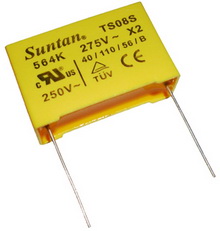Suntan offers Diode Rectifier M7
Suntan offers the broadest line of innovative diode rectifier-- M7. No matter from maximum repetitive peak reverse voltage or maximum dc blocking voltage,rectifier M7 is better than rectifier M1-M6. Technically speaking, diode rectifier M7 can replace diode rectifier M1-M6. Both the quality and the price of our M7 are very competitive in the market. It will be a great choice for surface mounted applications.
Diode Rectifier M7 Features:
- Reverse voltage 50 to 1000 Volts; forward current 1.0 Ampere
- The plastic package carries Underwriters Laboratory Flammability Classification 94V-0
- For surface mounted applications
- Low reverse leakage
- Built-in strain relief, ideal for automated placement
- High forward surge current capability
- High temperature soldering guaranteed: 250℃/10 seconds at terminals
- DO214AC package
More product information, please visits our website at http://www.suntan.com.hk/




